This quilt is improvisational insofar as English Paper Piecing can be. I say that because I keep changing my mind, but that’s what makes improvisation so much fun.
I dragged my quilt top out on the porch, my usual photo staging area, in its wicker basket to take photos for this post. The quilt top is currently way too large to lay out on the porch, but I think that draping edges outside of the basket will get my ideas across quite nicely.
When last I wrote about this piece I had planned to add a row of burgundy flowers to the left side and the right side of the quilt top. To that end I had started to make flowers and managed to put together eight of them. It had just started to snow when I took these photographs, and you can see flurries on the flowers below.
Seeking a change of pace, I decided to flesh out the top and bottom edges of the quilt with burgundy hexagons. It had to be done eventually anyway. While tackling this job I realized that the left and right edges were going to have to be fleshed out with hexagons in a similar fashion as the top and the bottom. This would add more length. It was at that point that I decided that I would be better off to allow the sides to fade to solid burgundy and simply stop adding more hexagons when the borders had reached a satisfactory length. Having changed gears, I threw these eight flowers into my scrap hexie flower bowl to become part of another quilt some day.
The following photographs show the various edges of the quilt top with rows of burgundy hexies added.
This is the bottom of the quilt. The next two photographs show closer looks at the bottom of the quilt. The bottom will require another row of hexagons, or a half row of hexagons depending on the method I choose to employ to finish the binding.
Looking at the photograph above you can see that if I were to simply discard half of the last row of hexagons it would result in the binding overlapping a portion of the flowers with the crimson centers. That won’t do. I have a couple of ideas about the quilting for the edges, and I have not yet decided which method I will use. Yet since the burgundy hexies are the central element of the quilt I can’t allow their shape to be broken by the border.
The next photograph represents the top edge of the quilt.
Here too, at least one addition row of burgundy hexies is required for the same reason as for the bottom edge.
Here is a reminder of what the central portion of the quilt looks like on a bed.
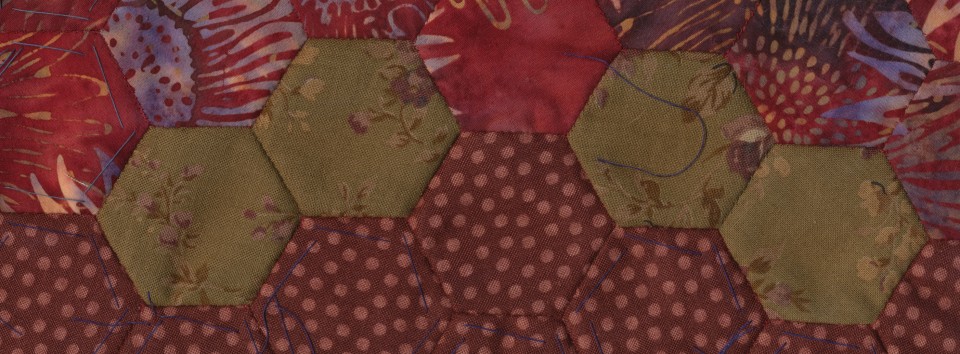
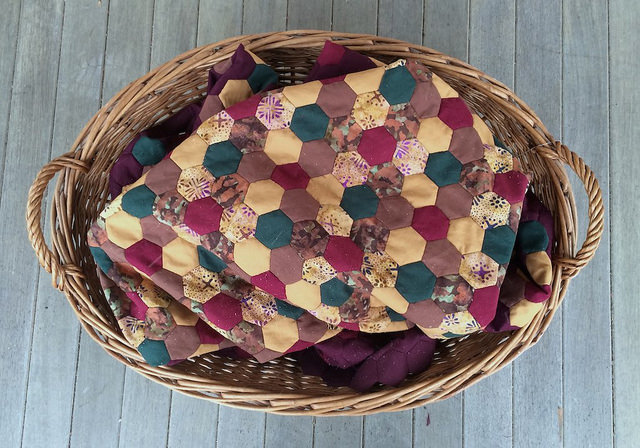
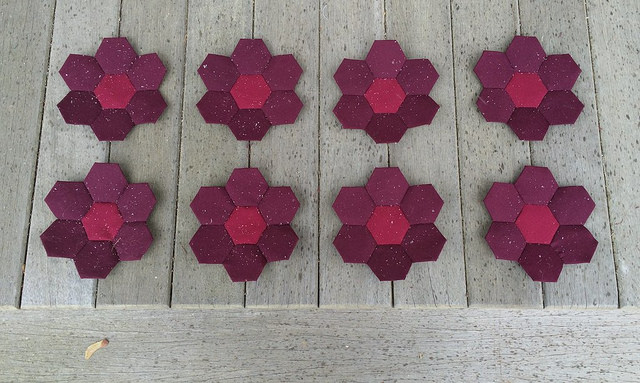
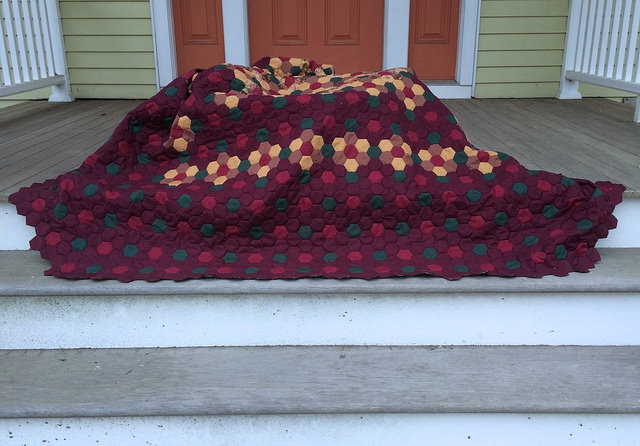
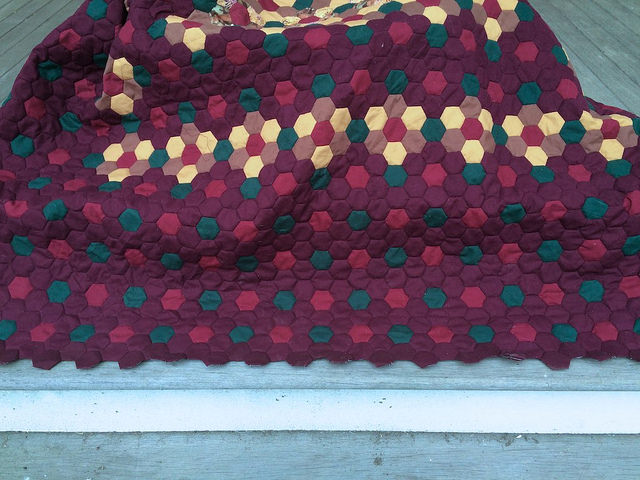

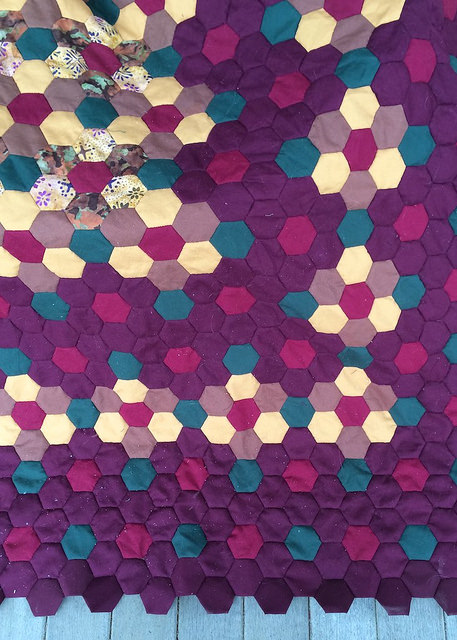
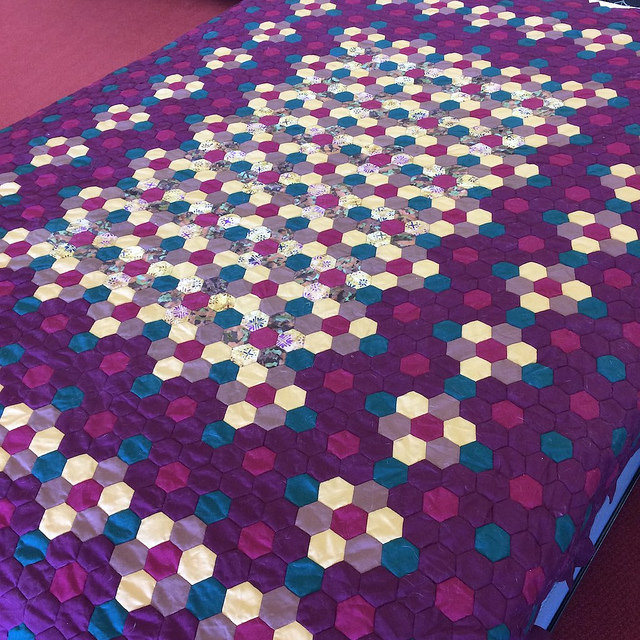
This is looking so great! Can’t wait to see another bed post to see it in all its glory!
This quilt is such a labour of love. Such nice rich colours on the edges and lightness in the middle.
I can’t believe how big this quilt is getting! Looks great! Thanks so much for joining in on my first link-up last Friday (catching up now from vacation!)